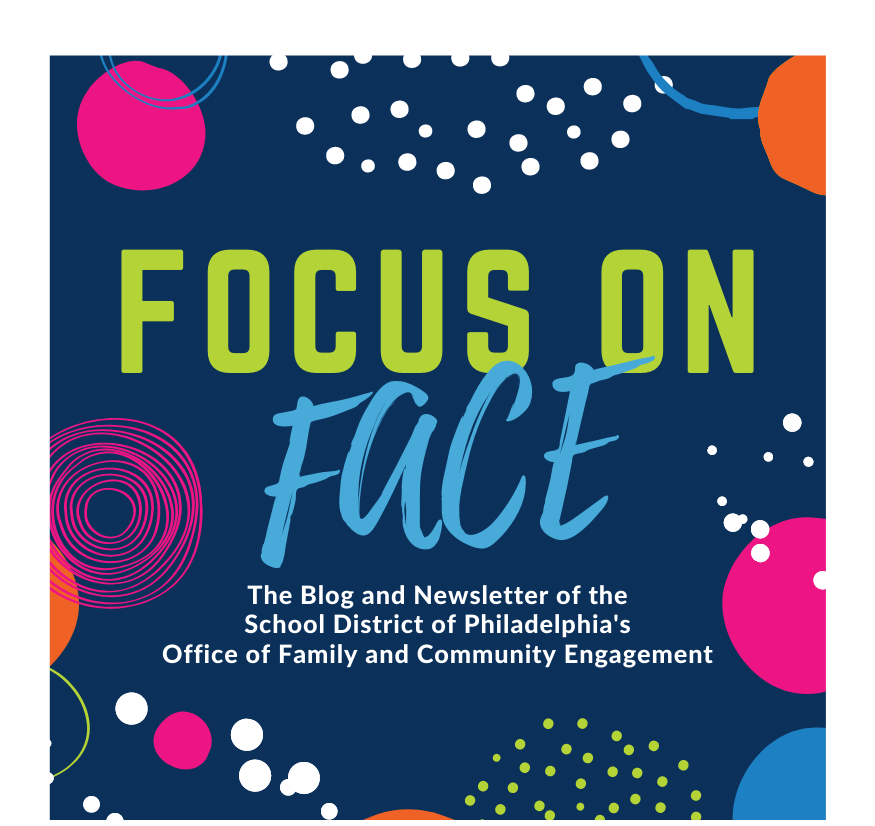As part of its Family Engagement Month celebration in October 2017, the Office of Family and Community Engagement awarded three schools a $1,000 prize to support a family engagement initiative planned by their School Advisory Council. This month, we write about Science Leadership Academy High School.

Photo Courtesy of @slanews, who tweets: “We’re lucky to have engaged families who attend HSA monthly meetings. Thanks to all for giving of your time to make #SLA thrive.”
Beginning in the 2016-17 school year, most principals, teachers, and families began to learn about what exactly a “SAC,” or School Advisory Council, was. SACs had existed before that school year in a handful of schools, but Fall 2016 was the year SACs really began to take off as a district-wide initiative. One of the schools that quickly picked up the momentum and hit the ground running with their SAC was Science Leadership Academy High School (SLA). The Office of Family and Community Engagement recently recognized the hard work that SLA has put in to increasing family engagement and building its SAC through designating the school a Family School Partnership Awardee.
Family involvement at SLA begins before students even start their four years at the school. Because the school is a special admissions high school, prospective students are required to participate in interviews with staff—something that also tends to call for engaged parents who can help their student prepare for what is likely to be the first official “interview” they’ve ever had to do.
Family engagement carries all the way through to graduation, too. One distinct feature of SLA—and SLA’s family engagement strategy—is their use of advisories. Students are assigned an advisor when they begin at SLA and participate in advisories, which are graded, twice a week at the end of the day.
Spending all four years together allows the advisors to get to know students and their families very well. Some advisories even hold potluck dinners to get to know each other. Counselor Zoe Siswick explains that the advisor “then becomes the liaison between the home and the school. In the off quarters, two and four, the parents are able to go in and meet with teachers.”
During report card quarters, Ms. Siswick explains that advisors take fifteen to twenty minutes to hold an advisor-parent-student conference, during which the students all receive “narrative report cards” in addition to their graded report cards.
“I, as an advisor, for example, am going to sit down with my advisee and his or her parents and go through all of those narrative reports and say, ‘these are some themes we’re seeing, these are some strengths, these are some areas of improvement, these are some goals we have,” Ms. Siswick says. In-person family participation for these conferences is over 90%.
The school also utilizes family volunteers to help run their school store, to assist in conducting admissions interviews, and to facilitate and welcome guests to their yearly education conference on project-based learning held in January.
The school also has a particularly strong Home and School Association, and co-principal Aaron Gerwer knew he had to take advantage of that when he started building the school’s SAC.
“We kind of leveraged a lot of people who were already involved in the Home and School Association, and then some students who wanted to have a bigger voice in the school,” Mr. Gerwer explains. “And through that we started out by just going through the school’s data, climate data, test scores, and having conversations.”
Mr. Gerwer sees his school’s HSA and SAC as quite distinct from one another.
“Our HSA isn’t so much about looking at school data and thinking about directions with that data, it is a nonprofit,” Mr. Gerwer explains. “Their main concern is making sure the school is healthy and also making sure the

Co-Principal Aaron Gerwer accepts the Family School Partnership Award at the October Family Engagement Conference.
school is funded at the level it needs to be.”
“I would say the SAC is more focused on some of the academic and climate programs going on at the school,” he continues. “It’s more about asking questions and getting on a path to finding solutions for some things with different stakeholders.”
This school year, all of the school’s groups have started to have a unique voice and purpose in the school.
In its inaugural year, the SAC decided to take on one large project: instilling restorative justice and practices into the SLA school community. Although Mr. Gerwer argues the school’s “method of dealing with misbehavior has always been from a restorative practices perspective,” he explains that the school, in partnership with the SAC, “were looking to get a little bit deeper into the work and maybe codify things more and get better at what we do.”
The SAC is now working its way through The Restorative Practices Handbook for Teachers, Disciplinarians and Administrators by Bob Costello and seeks to involve all stakeholders in efforts to implement it into the school’s culture.
Having all stakeholders involved in the SAC is something the school truly values and has expanded upon. Senior Tamir Harper explains that before now, SLA did not have a student government, but SAC was somewhat of a springboard for the student government that formed this year.
“Some students were saying, ‘we don’t have a voice at SLA,'” Mr. Harper says. “When they said that, the other student—Kwan Hopkins—and I said we can be that voice on the SAC and we took great responsibility in that.” This also goes for family members; as parent Diana Moro argues, “Parent input about data helps the school better plan and evaluate options as we move forward.”
Some members even commented on a future project they hope to be involved in: SLA’s move from their building on 22nd Street into what is now Ben Franklin High School on Broad Street, where the two schools will coexist beginning in the 2019-20 school year. Although there is also a school committee for this, Kwan Hopkins hopes the SAC can be involved as well.
“We will be taking on the building move, but also making sure everyone is comfortable in the building move,” Mr. Hopkins says. “Not just the SLA, but the Ben Franklin parents and students as well.”
Although the SAC is meticulously taking on the endeavor of implementing restorative practices in the school, they are collaborating, thinking ahead, and excited for the years to come.

